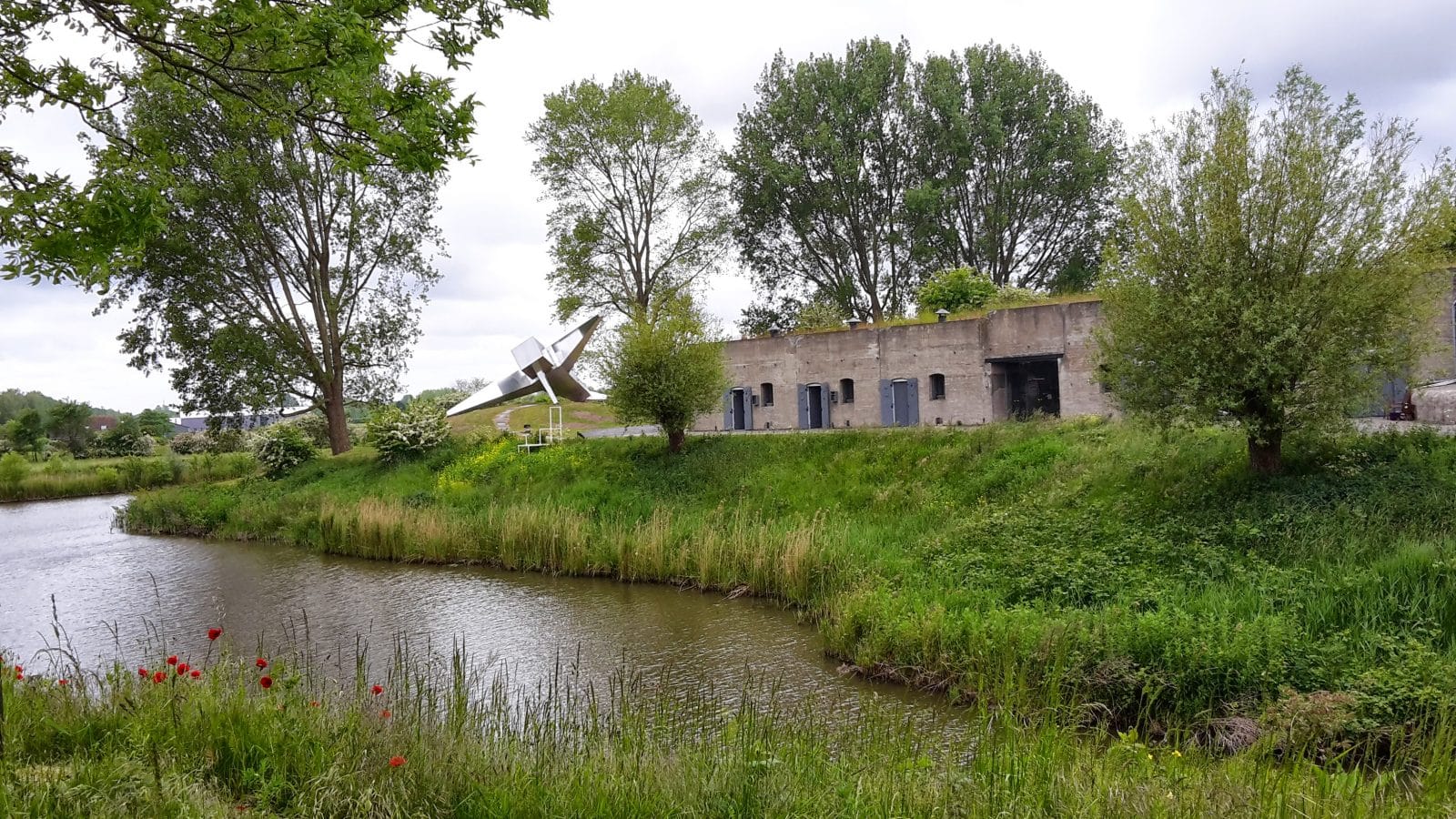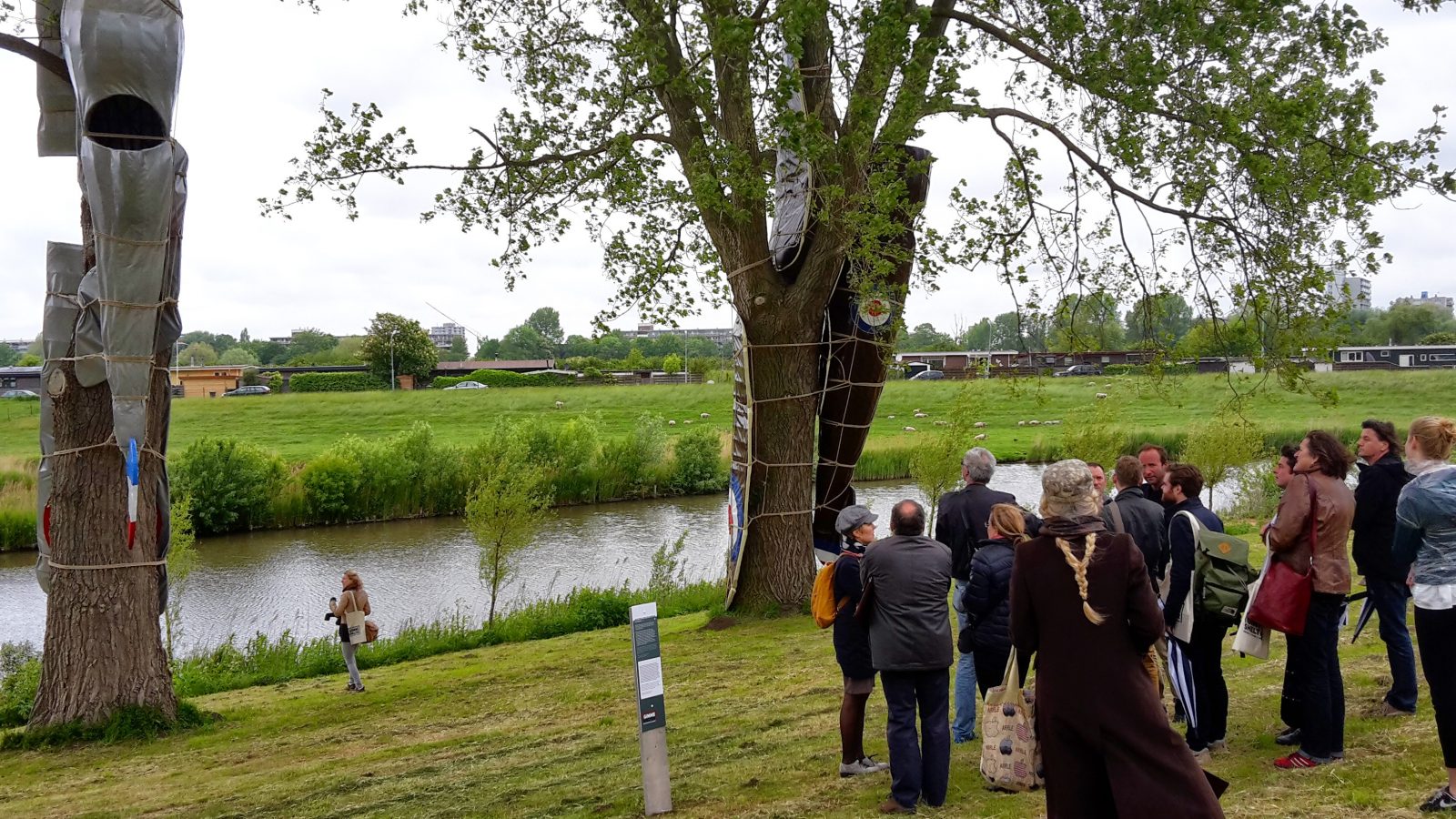Fort Nieuwersluis is the biggest surprise of the art event Gimme Shelter. Until a year and a half ago, the defensive work was a no-goarea. The BB ('Bescherming Burgerbevolking') sat there until 1989 to protect telephone lines during, but especially after World War III, when the rest of the Netherlands would be hiding under the kitchen table from the H-Bomb. When the nuclear-free fortress became permanently obsolete with the fall of the wall, defence abandoned the complex and nature took over. Hawthorns grow. Bearded bats nest. And now, in the tower bunker, distorted trumpets sound, blowing a modern revival. Bleak, impressive, beautiful.
We always prepare for the previous war. That way, the next war can take us by surprise again and again. Gimmie Shelter was conceived and developed by art critics Lucette ter Borg and Sacha Bronwasser to give artistic form to that idea. As a location, they chose three striking forts of the Dutch Waterline and the Defence Line of Amsterdam. That line of defence was built during the 19th century. The billion-dollar project with a total of almost 150 forts, bunkers and fortifications between Amsterdam and the Biesbosch was not shown on maps, hidden behind moats and barbed wire, forming its own iron curtain in the Dutch lowlands. Even during construction, it became clear that all the work was useless: the brick bunkers were no match for modern shells, and flooding the Netherlands made little sense if the enemy reported by air.
"The Waterline was the JSF of the 19e century," Ter Borg explains during a tour with journalists. That is why at the three forts where Gimme Shelter can be seen, one element is the same. There is an artistic impression of the plane that no drone can shoot out of the sky yet in Vijfhuizen, Nieuwersluis and Asperen alike: the Joint Strike Fighter. Those pieces de resistance are all different, and all three are impressive in different ways.

The JSF from Vijfhuizen (Matjaž Štuk & Alena Hudcovičová) is a tonne-sized aluminium menace balancing on no more than eight square centimetres of ground contact. A threat emanates from the shiny aluminium thing because of that alone, even though it is on the verge of striking the flanks of the fortress under the smoke of Haarlem.

Artist Zoro Feigl's wings balancing on a simple tow bar are equally exciting. In a punishing breeze, they float in all directions, occasionally right over the heads of visitors. You have to be seriously careful not to get hit by this horizontal mill, but that knowledge only adds to the feeling the event wants to evoke: war is madness that strikes for no reason.
There is beautiful art to see: outside, but especially in the forts. With a hefty grant from the Mondriaan Fund, among others, Ter Borg and her colleague Sacha Bronwasser were able to commission work from established names such as the aforementioned Zoro Feigl, but also Lida Abdul and Stefan Gross. By the latter is the pink acid stick-JSF at Fort Asperen.

Between the artworks, the event's curators leave plenty of room for the original details of the forts themselves. In Nieuwersluis in particular, this provides a special experience. Because the fort was only recently 'discovered', you can still feel the spirit of the Cold War in every little room. The telephone books from 1989, the hand-operated signs warning of fallout, the bicycles that allowed air circulation to be maintained.
In such a setting, Omer Fast's work 'Continuity' comes off chillingly well. The video film, projected in one of the fort's dark bunkers, shows a pair of parents picking up a young war veteran from the train. Whether it is their son or not, whether his story is real or not, all questions come to mind. Enough for 20 minutes of haunting.
In this way, they make each fort a distinct experience, while the central theme, the mad fiction of war, resonates throughout. That is quite a feat, and it is beautiful to witness.

Whether you should visit the three forts in one day? I would advise against it. But you should go and see all three. Asperen, where the exhibition is largest, contains some of the most subtle works. Ralf Westerhof's glowing iron wire hearts are wondrous and at the same time very convincingly tell the story that enemy images are fictions. Dick Verdult has hung Margaret Thatcher in the central shaft as the comical clown she is today in Argentine street and TV entertainment.

In Vijfhuizen, a couple of historic aeroplanes hang along the waterfront, as a kit in a tree, like caterpillars in pupation. A few metres away, you can be helped across a bridge by strangers or friends, at the risk of not being able to return.
War can be very close.
